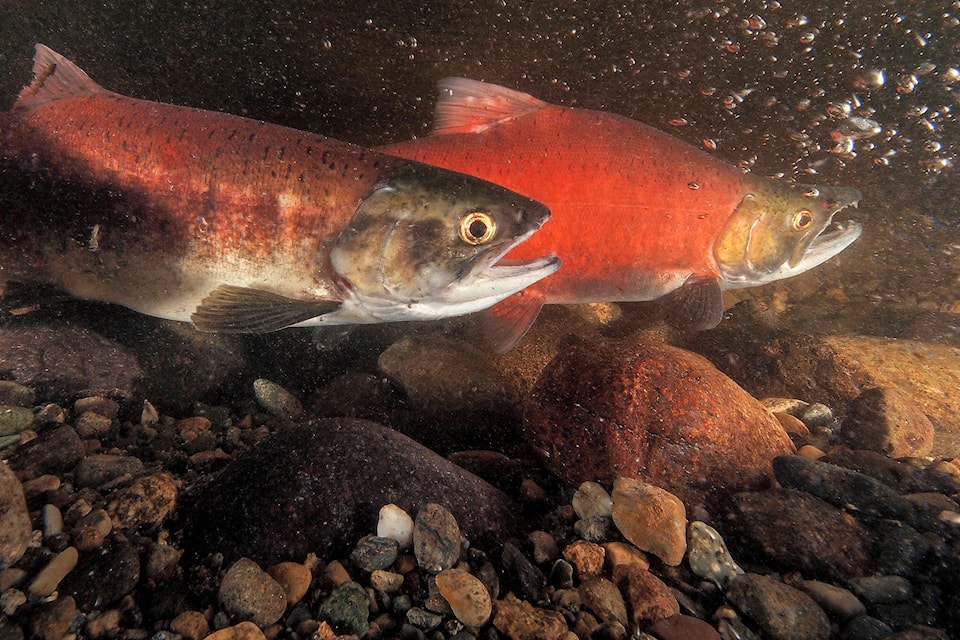Even though the Okanagan’s creek spawning kokanee salmon population has been stable for the last few years, climate change is still concerning a fish biologist in the region.
Tara White, senior fisheries biologist with the province for the Okanagan region, said she has yet to release the final numbers for returning kokanee spawners this year, but shoreline kokanee spawning populations have been increasing for the past 10 years. Creek spawning kokanee populations have been declining.
“It’s hard to say at this point but it’s definitely concerning in terms of increased frequency of low flows and droughts that we’re seeing, particularly (on) the impact on all of our streams,” she said. “Rainbow trout, kokanee, species at risk, it’s definitely a concern in the summer months… because the lethal range for (the fish) is typically around 18 to 24 C and it depends on the number of days they’re subjected to these temperatures.”
READ MORE: Kokanee headed upstream to spawn and die
As more droughts frequent the Okanagan, “there may be an increased frequency of fish kill,” White said. “Fish come up in the fall to spawn and there’s not necessarily enough water in the streams.”
While kokanee river spawners have been declining, the population in the Okanagan has been stable in the last three to four years, she said.
A historic drought in 2015 prevented the fish from spawning due to low water levels and in 2017 floods in the Okanagan also impacted the creek spawners, as sediment prevented the salmon from reaching their spawning grounds, she said.
“That’s been the biggest challenge the last few years in the Okanagan is ensuring access from the lake to the (spawning streams) and sufficient water,” she said. “We’ve been working with municipalities, First Nations to ensure we have access at the mouth (of the streams.)”
Shorts Creek in Fintry Provincial Park had two metres of sediment that collected at the mouth of the creek in 2017.
However, Wood Lake had good water levels this year for Middle Vernon Creek, White said. But a 2015 drought is still affecting the population.
“We suspect the survival of eggs and kokanee fry during that year were lower, so as a result, you have lower numbers coming back three years later in 2018,” White said.
From 2016 to 2017, the population had a historic number of fish returns from 34,000 to 36,000 fish in Wood Lake, she said. “When haven’t seen numbers close to that since the mid 1990s.”
The focus is on the protection of habitat, there is an ongoing Penticton Creek restoration initiative, a concrete plume is being removed to provide a natural bottom.
In Mission Creek, there’s been a set back of the dykes with the intent of recovering loss habitat and deep water refuge areas for salmon.
“The additional benefit to set back the dykes is also to reduce flooding in the City of Kelowna,” she said.
The last 10 years have seen progress in water use plans. All environmental plans in the Okanagan have water use plans to determine how low water levels can be, she said.
READ MORE: Kokanee to make their way back to Kelowna
“We’re in a similar range for creek and shore spawners to 2016, 2017 years,” she said. Wood Lake numbers are a third of 2016, 2017 because the last few years were historic runs.
Skaha is similar to 2016, 2017 numbers and Kalamalka Lake saw a slight decline.
The kokanee population crashed in the mid ‘90s, she said, because of high water temperatures and slow flows in streams.
edit@kelownacapnews.com
Like us on Facebook and follow us on Twitter.
